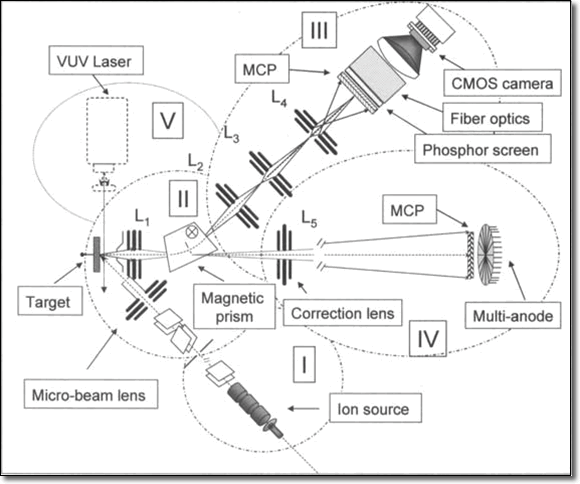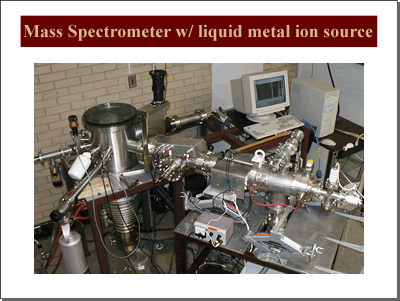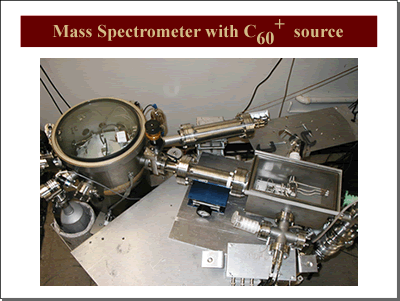Instrumentation

Schematic of the Imaging SIMS. Module I, contains the primary ion source (currently C60, to be replaced with Au- and Bi-LMIS), mass filter (to be upgraded), acceleration stage (currently 15 kV, to be replaced with 200 kV set-up), primary ion optics and pulsing for achieving the conditions of single projectile bombardment. Module II, consist of the sample stage, an immersion objective (L1, Slodzian type) and a magnetic prism with achromatic deflection (Liebl type). Module III, contains the electron optics and electron imaging detector. The optics (L2-L4) are those of an emission electron microscope, calculated to minimize spherical and chromatic aberrations. The electron imaging detector consists of a dual MCP, a phosphor screen attached to a fiber optic rod (Beam Imaging Solution Inc.) and a CMOS camera (Basler A504k). Module IV, corresponds to the SI ToF region with a 8- or 16- anode detector. Module V (planned, hence the dotted lines), is composed of the VUV laser with optics for the postionization experiments.

